Showing Spotlights 425 - 432 of 627 in category All (newest first):
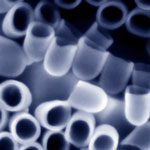 Many nanotechnology research efforts have explored the use of hollow nanochannels formed by carbon nanotubes (CNTs). However, the usually large length/diameter aspect ratio of CNTs has made it challenging to insert other materials into them in a controlled manner. A team of scientists has now developed the idea of using a nanocup morphology to solve this problem. The length/diameter ratio of these new graphitic architectures is 1,000 to 100,000 times smaller compared to conventional carbon nanotubes. This will allow researchers to build highly engineered and multicomponent functional nano building blocks for various applications including nanomedicine and nanometrology.
Many nanotechnology research efforts have explored the use of hollow nanochannels formed by carbon nanotubes (CNTs). However, the usually large length/diameter aspect ratio of CNTs has made it challenging to insert other materials into them in a controlled manner. A team of scientists has now developed the idea of using a nanocup morphology to solve this problem. The length/diameter ratio of these new graphitic architectures is 1,000 to 100,000 times smaller compared to conventional carbon nanotubes. This will allow researchers to build highly engineered and multicomponent functional nano building blocks for various applications including nanomedicine and nanometrology.
May 11th, 2009
 Much effort has been invested into finding a non-toxic replacement for semiconductor quantum dots (Q-dots) possessing bright fluorescence. Intrinsic toxicity of Q-dots composed of elements such as selenium, tellurium, cadmium, and lead severely hinders their in vivo applications for fluorescent imaging. Therefore many carbon nanomaterials have been considered as a replacement for Q-dots for in vivo imaging. However, it is still unclear how safe carbon nanomaterials are, and this is an obstacle for their use in medicine. Nanodiamond has been an exception among nanomaterials in many aspects, but what is important for biomedical applications is that it has shown very little or zero toxicity in all tests done so far. In addition, nanodiamond powders are already produced by detonation on a large commercial scale. This is why fluorescent nanodiamonds currently attract so much attention.
Much effort has been invested into finding a non-toxic replacement for semiconductor quantum dots (Q-dots) possessing bright fluorescence. Intrinsic toxicity of Q-dots composed of elements such as selenium, tellurium, cadmium, and lead severely hinders their in vivo applications for fluorescent imaging. Therefore many carbon nanomaterials have been considered as a replacement for Q-dots for in vivo imaging. However, it is still unclear how safe carbon nanomaterials are, and this is an obstacle for their use in medicine. Nanodiamond has been an exception among nanomaterials in many aspects, but what is important for biomedical applications is that it has shown very little or zero toxicity in all tests done so far. In addition, nanodiamond powders are already produced by detonation on a large commercial scale. This is why fluorescent nanodiamonds currently attract so much attention.
Mar 30th, 2009
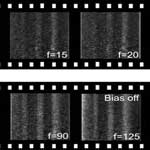 For the past 20+ years, the atomic force microscope has been one of the most important tools to visualize nanoscale objects where conventional optics cannot resolve them due to the wave nature of light. One limiting factor of conventional AFM operation is the speed at which images can be acquired. Over the past five years, researchers have been developing a high-speed AFM capable of video-rate image capture. An AFM with this ability enables nanoscale processes to be observed in real-time, rather than capturing only snap-shots in time. An obvious application of this instrument is to modify the sample surface while observing changes in the surface topography. Successful demonstration of this would indicate the potential for a new generation of fabrication tools. Scientists have now done exactly that.
For the past 20+ years, the atomic force microscope has been one of the most important tools to visualize nanoscale objects where conventional optics cannot resolve them due to the wave nature of light. One limiting factor of conventional AFM operation is the speed at which images can be acquired. Over the past five years, researchers have been developing a high-speed AFM capable of video-rate image capture. An AFM with this ability enables nanoscale processes to be observed in real-time, rather than capturing only snap-shots in time. An obvious application of this instrument is to modify the sample surface while observing changes in the surface topography. Successful demonstration of this would indicate the potential for a new generation of fabrication tools. Scientists have now done exactly that.
Mar 16th, 2009
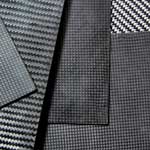 Currently, all existing methods of fabricating CNT-polymer composites involve quite complicated, expensive, time-demanding processing techniques such as solution casting, melting, molding, extrusion, and in situ polymerization. In all of these techniques, nanotubes must either be incorporated into a polymer solution, molten polymer or mixed with the initial monomer before the formation of the final product. In addition, these methods can not be applied in the case of insoluble or temperature sensitive polymers, which decompose without melting. Kevlar is a well known high-strength polymer with a variety of important applications - think bullet-proof vests and car armor plating. However, Kevlar is not soluble in any common solvent and Kevlar fibers must be produced by wet spinning from sulphuric acid solutions. Researchers in Ireland have now found a way to develop a new effective post-processing technique which would allow to incorporate carbon nanotubes into already formed polymer products, such as for example Kevlar yarns.
Currently, all existing methods of fabricating CNT-polymer composites involve quite complicated, expensive, time-demanding processing techniques such as solution casting, melting, molding, extrusion, and in situ polymerization. In all of these techniques, nanotubes must either be incorporated into a polymer solution, molten polymer or mixed with the initial monomer before the formation of the final product. In addition, these methods can not be applied in the case of insoluble or temperature sensitive polymers, which decompose without melting. Kevlar is a well known high-strength polymer with a variety of important applications - think bullet-proof vests and car armor plating. However, Kevlar is not soluble in any common solvent and Kevlar fibers must be produced by wet spinning from sulphuric acid solutions. Researchers in Ireland have now found a way to develop a new effective post-processing technique which would allow to incorporate carbon nanotubes into already formed polymer products, such as for example Kevlar yarns.
Feb 25th, 2009
 Back in 2006, researchers introduced the concept of a carbon nanotube (CNT) knife that, in theory, would work like a tight-wire cheese slicer. In the meantime, other research groups have developed similar approaches, for instance for cutting and sharpening carbon nanotubes (see for instance: Nanotechnology grinders). Now, the group that introduced the CNT nanoknife in 2006 has refined their design and demonstrated the feasibility of fabricating a nanoknife (compression-cutting tool at the nanoscale) based on an individual CNT. The researchers stretched an individual nanotube between two tungsten needles in a manner that allowed them to test the mechanical strength of assembled device. A force test on the prototype nanoknife indicated that failure was at the weld while the CNT was unaffected by the force we applied. In situ load tests on the nanoknife indicated maximum breaking force to be in micro Newton range.
Back in 2006, researchers introduced the concept of a carbon nanotube (CNT) knife that, in theory, would work like a tight-wire cheese slicer. In the meantime, other research groups have developed similar approaches, for instance for cutting and sharpening carbon nanotubes (see for instance: Nanotechnology grinders). Now, the group that introduced the CNT nanoknife in 2006 has refined their design and demonstrated the feasibility of fabricating a nanoknife (compression-cutting tool at the nanoscale) based on an individual CNT. The researchers stretched an individual nanotube between two tungsten needles in a manner that allowed them to test the mechanical strength of assembled device. A force test on the prototype nanoknife indicated that failure was at the weld while the CNT was unaffected by the force we applied. In situ load tests on the nanoknife indicated maximum breaking force to be in micro Newton range.
Feb 18th, 2009
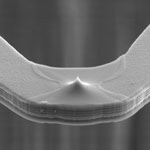 Nearly every chemical or physical property of materials depends upon temperature, and researchers are only beginning to understand the huge breadth of applications that nanoscale heaters could facilitate. For example, scientists have previously demonstrated that a micro-heater built into an atomic force microscope can be used instead of a large furnace that is normally used to grow nanotubes as part of the chemical vapor deposition process. The tiny device provided highly-localized heating for only the locations where researchers wanted to grow the nanostructures. While most previous research on this kind of microcantilever heaters and thermometers used device elements that were several micrometers in size, researchers have now reported an approach to fabricate a 100 nanometer-sized heater/thermometer using contact photolithography and controlled anneal conditions. A deep understanding of nanomaterials requires nanoscale probes. With such nanoscale heater/thermometer devices it becomes possible to test the temperature dependence of materials properties at the very smallest scale and perform thermal diagnostics of nanomaterials.
Nearly every chemical or physical property of materials depends upon temperature, and researchers are only beginning to understand the huge breadth of applications that nanoscale heaters could facilitate. For example, scientists have previously demonstrated that a micro-heater built into an atomic force microscope can be used instead of a large furnace that is normally used to grow nanotubes as part of the chemical vapor deposition process. The tiny device provided highly-localized heating for only the locations where researchers wanted to grow the nanostructures. While most previous research on this kind of microcantilever heaters and thermometers used device elements that were several micrometers in size, researchers have now reported an approach to fabricate a 100 nanometer-sized heater/thermometer using contact photolithography and controlled anneal conditions. A deep understanding of nanomaterials requires nanoscale probes. With such nanoscale heater/thermometer devices it becomes possible to test the temperature dependence of materials properties at the very smallest scale and perform thermal diagnostics of nanomaterials.
Feb 9th, 2009
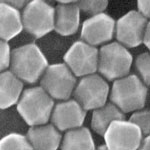 The properties of a quantum dot are not only determined by its size but also by its shape, composition, and structure, for instance if it's solid or hollow. A reliable manufacturing technology that makes use of nanocrystals' properties - for a wide-ranging number of applications in such areas as catalysis, electronics, photonics, information storage, imaging, medicine, or sensing - needs to be capable of churning out large quantities of nanocrystals where each batch is produced according to the exactly same parameters. In a recent review article, Sara Skrabalak from Indiana University and Younan Xia from Washington University in St. Louis, describe recent advances in seeded growth as the ultimate approach to producing metal nanocrystals with precisely controlled sizes, shapes, and compositions - the necessary first step toward their use and assembly for large-scale applications.
The properties of a quantum dot are not only determined by its size but also by its shape, composition, and structure, for instance if it's solid or hollow. A reliable manufacturing technology that makes use of nanocrystals' properties - for a wide-ranging number of applications in such areas as catalysis, electronics, photonics, information storage, imaging, medicine, or sensing - needs to be capable of churning out large quantities of nanocrystals where each batch is produced according to the exactly same parameters. In a recent review article, Sara Skrabalak from Indiana University and Younan Xia from Washington University in St. Louis, describe recent advances in seeded growth as the ultimate approach to producing metal nanocrystals with precisely controlled sizes, shapes, and compositions - the necessary first step toward their use and assembly for large-scale applications.
Feb 2nd, 2009
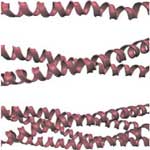 In a previous Nanotechnology Spotlight, we describe how, in order to develop tomorrow's supermaterials, scientists need to unlock nature's structural design rules, in particular for nanoscopic hierarchical molecular structures, and make them available to engineers. This is only possible through a deep understanding of the structure-property relations in biological materials. There is also a surprising relationship between these material design issues and the understanding (or rather lack thereof) of genetic diseases, where structural changes are due to mutations on the molecular level that lead to changed chemical and mechanical properties, which in turn lead to a malfunction of the protein network under mechanical load. Hierarchical nanostructures - ranging through atomistic, molecular and macroscopic scales - represent universal features of biological protein materials. New work by MIT professor Markus Buehler discusses the role of these structural hierarchies in determining properties of biological materials.
In a previous Nanotechnology Spotlight, we describe how, in order to develop tomorrow's supermaterials, scientists need to unlock nature's structural design rules, in particular for nanoscopic hierarchical molecular structures, and make them available to engineers. This is only possible through a deep understanding of the structure-property relations in biological materials. There is also a surprising relationship between these material design issues and the understanding (or rather lack thereof) of genetic diseases, where structural changes are due to mutations on the molecular level that lead to changed chemical and mechanical properties, which in turn lead to a malfunction of the protein network under mechanical load. Hierarchical nanostructures - ranging through atomistic, molecular and macroscopic scales - represent universal features of biological protein materials. New work by MIT professor Markus Buehler discusses the role of these structural hierarchies in determining properties of biological materials.
Jan 27th, 2009
 Many nanotechnology research efforts have explored the use of hollow nanochannels formed by carbon nanotubes (CNTs). However, the usually large length/diameter aspect ratio of CNTs has made it challenging to insert other materials into them in a controlled manner. A team of scientists has now developed the idea of using a nanocup morphology to solve this problem. The length/diameter ratio of these new graphitic architectures is 1,000 to 100,000 times smaller compared to conventional carbon nanotubes. This will allow researchers to build highly engineered and multicomponent functional nano building blocks for various applications including nanomedicine and nanometrology.
Many nanotechnology research efforts have explored the use of hollow nanochannels formed by carbon nanotubes (CNTs). However, the usually large length/diameter aspect ratio of CNTs has made it challenging to insert other materials into them in a controlled manner. A team of scientists has now developed the idea of using a nanocup morphology to solve this problem. The length/diameter ratio of these new graphitic architectures is 1,000 to 100,000 times smaller compared to conventional carbon nanotubes. This will allow researchers to build highly engineered and multicomponent functional nano building blocks for various applications including nanomedicine and nanometrology.
 Subscribe to our Nanotechnology Spotlight feed
Subscribe to our Nanotechnology Spotlight feed





